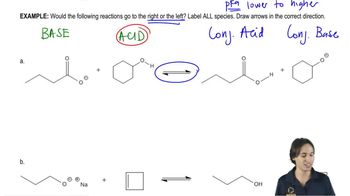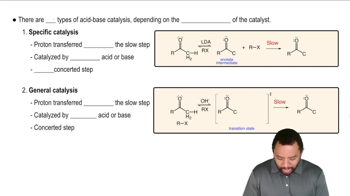We usually calculate Keq for acid–base reactions using pKa values.
(a) Derive an equation to calculate Keq using pKb values, then
(b) use it to calculate the equilibrium constant for the following reaction.

 Verified step by step guidance
Verified step by step guidance Verified video answer for a similar problem:
Verified video answer for a similar problem:



 1:46m
1:46mMaster Why we use pKa instead of pH. with a bite sized video explanation from Johnny
Start learning